Biometric residence permits: general information for applicants, employers and sponsors (accessible version)
Updated 7 February 2022
Guidance notes
Biometric residence permits (BRPs) and biometric residence cards (BRCs): General information for completion of Knowing Your Customer (KYC) checks.
September 2018
When making an application for a UK bank account, customers may provide proof of identity from a range of options that include:
- current EU/EEA passport, photo driving licence or identity card
- all other current signed passports, with a valid UK Visa where applicable
- Home Office Immigration Status Document accompanied by proof of right to reside
- biometric residence permit (BRP) or biometric residence card (BRC)
This guidance offers information to account providers about BRPs and BRCs.
What are biometric residence permits and biometric residence cards?
The BRP and BRC hold a customer’s biographic details (name, date and place of birth) and biometric information (facial image and fingerprints), and shows their immigration status and entitlements while they remain in the UK. BRPs are titled ‘Residence Permit’ or ‘Short Stay Permit’ and BRCs are titled ‘Residence Card’, ‘Permanent Residence Card’ or ‘Derivative Residence Card’.

Who may apply?
Foreign nationals from outside the European Economic Area making certain applications to the Home Office have to apply for a BRP.
Foreign nationals from outside the European Economic Area who are able to live and work in the UK based on rights derived from EU law may apply for a BRC.
Successful applicants receive a biometric residence permit as evidence of their status in the United Kingdom.
How can a BRP or BRC be used?
BRPs and BRCs are evidence of the holder’s right to stay in the United Kingdom, and show the conditions of a customer’s stay. It enables him/her to confirm his/her identity as part of the process for opening a bank account in the UK and rights to study and/or work here, and to access public services. For some immigration categories, the National Insurance Number will appear in the remarks on the reverse of the document.
Some foreign nationals, such as refugees, will only hold a BRP as evidence of their identity and status in the UK and will not be able to produce any other form of identity document. Others will have alternative forms of ID – for example, a passport or national identity card.
Biometric residence permits near to the end date?
If a customer has limited leave to enter or remain and wishes to remain in the United Kingdom, he/she will need to make a further application to the Home Office before the leave expires.
Design of the biometric residence permit
The biometric residence permit is a standard credit card size (86mm x 54mm) and looks similar to those issued by some other EU countries. The permit is made from polycarbonate and contains a chip to make it more secure against forgery and abuse.

-
Holder’s digital image
-
Holder’s name
-
Valid until – the date the permit expires. This date is at the end of the time the holder is allowed to stay; or five or 10 years if the holder has been given permission to settle in the UK (known as indefinite leave to remain)
-
Place and date of issue – this is the UK followed by the date the permit was issued
-
Type of permit – this is the immigration category the holder is in (for example, STUDENT)
-
Remarks – these are the immigration entitlements for the length of the holder’s stay, and may continue on the back of the permit
-
ZW9005196 – unique permit number
-
Holder’s signature
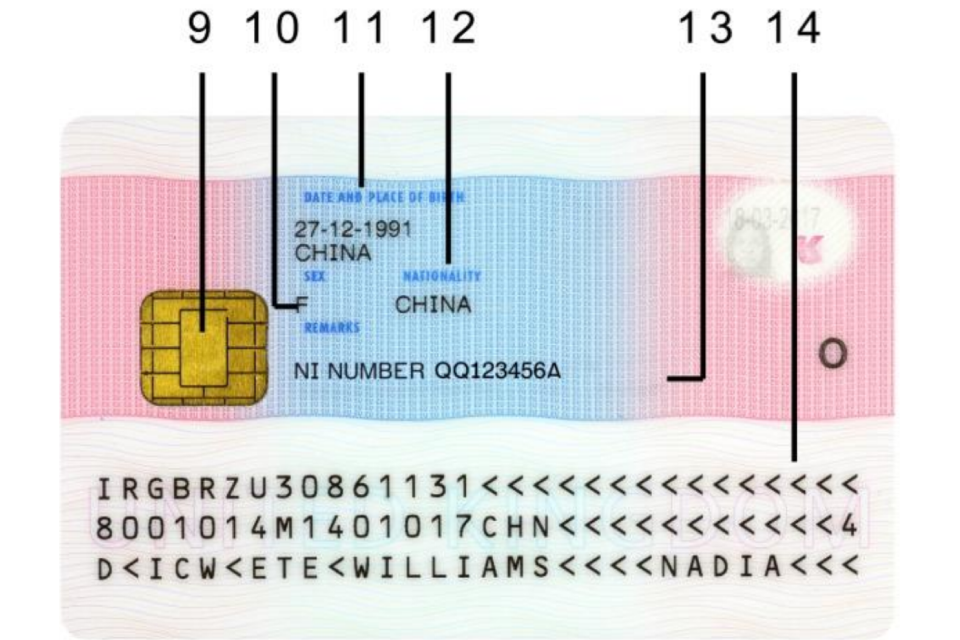
9. Biometric chip
10. Holder’s gender
11. Holder’s date and place of birth
12. Holder’s nationality
13. Remarks – this is a continuation of immigration entitlements for the length of time of the holder’s stay (see 6 above). In appropriate cases, the National Insurance Number will appear here.
14. Machine readable zone (MRZ) – this area allows information printed on the permit to be read quickly by machine.
Checking the BRP or BRC
The following advice sets out how you can manually check a BRP or a BRC. If a customer provides a BRP or a BRC as proof of identity, you must take reasonable steps, including the following, when checking the document:
Look at the document carefully
- Is it clean and in good condition? Does it look tampered with?
- Check that relevant expiry dates have not passed.
Check the permit number
- This is on the front of the permit in the top right-hand corner.
- It should start with 2 letters. The third character in the permit number can be ‘X’ or a digit. The last 6 characters will be digits. The permit number should not be raised.
Check the holder’s Image
- The holder’s image will always be in grey-scale.
- Check that it matches the person presenting it to you.
Check the biographical details (name, date of birth, etc)
- Check that they match the details of the person presenting it to you.
- Check the dates of birth listed so that you are satisfied these are consistent with the appearance of your customer.
Check the ‘tactile feature’ (on the back)
- The back has a raised design incorporating the four national flowers of the United Kingdom.
- The design can be seen by shining a light across the permit.
- You can also feel the raised design by running your finger over it.
Feel the permit
- It should feel thicker than a driving licence.
- The permit will have a distinctive sound when flicked.
- The permit should not be bent or folded.
Check the holder’s immigration conditions
These are shown on both the front and the back of the permit. For example, it might confirm that an individual has no right to work or can only work a limited number of hours per week.
Security features
The International Civil Aviation Organisation ‘chip inside’ symbol, found on the front of the permit above the holder’s image, is printed using Optically Variable Ink (OVI). As the permit is tilted, the OVI shifts colour depending on the angle of viewing, whilst displaying a metallic quality.
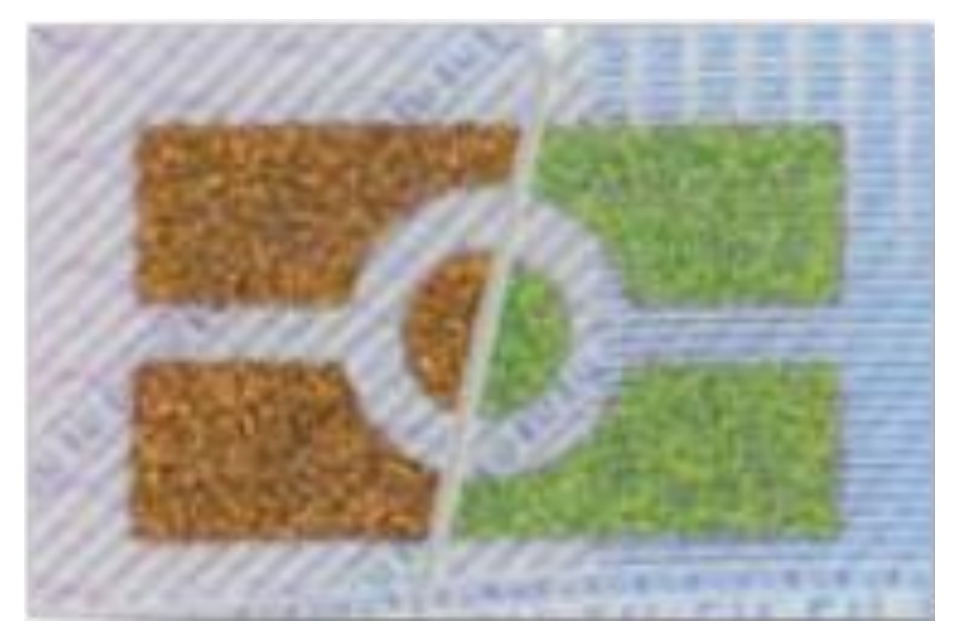
Two colour ultraviolet design – the angle of the design is different on the front and back.
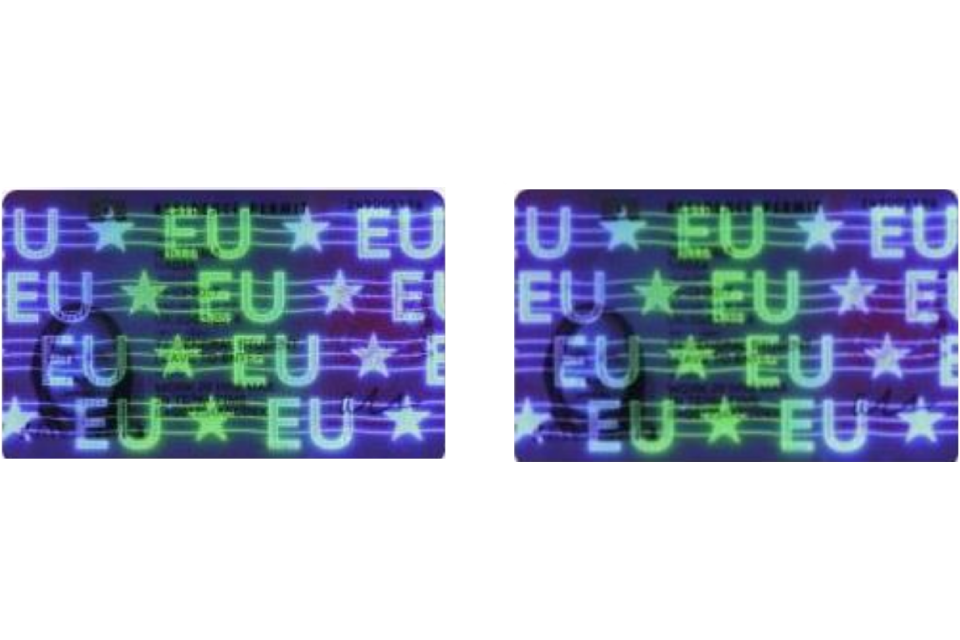
Dynaprint – from one angle, the ‘valid until’ date and the letter ‘U’ are visible; tilting the permit replaces these with a photograph of the holder and the letter ‘K’.

Tactile feature – the back has a raised design incorporating the four national flowers of the UK, seen by shining a light across the permit.

The permit number is unique.
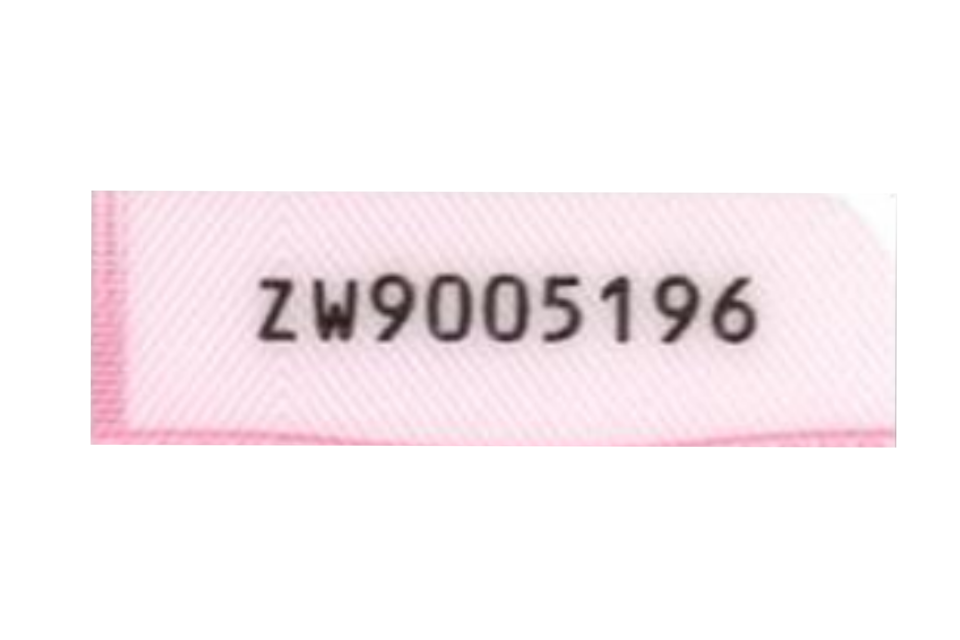
Kinegramᵀᴹ – various designs can be seen as the permit is tilted, showing a distinctive colour change and large amount of fine detail.
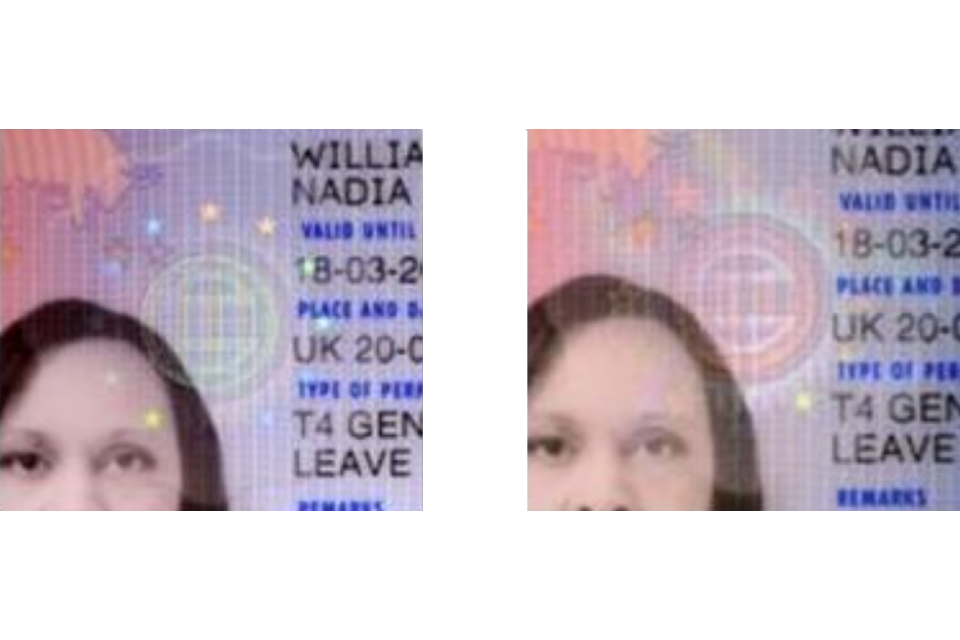
Physical checks can also be performed on the BRP and BRC. As they are made entirely from polycarbonate, they will have a distinctive sound when flicked, and the holder’s image will always be in grey-scale. The permit should not be bent or folded, as this is likely to cause it to break. Contact with water should be avoided to prevent damage to the chip.
Identity document validation technology is available that will assist you to check BRPs and BRCs electronically.
Further information about biometric residence permits
Biometric residence permits (BRPs)
